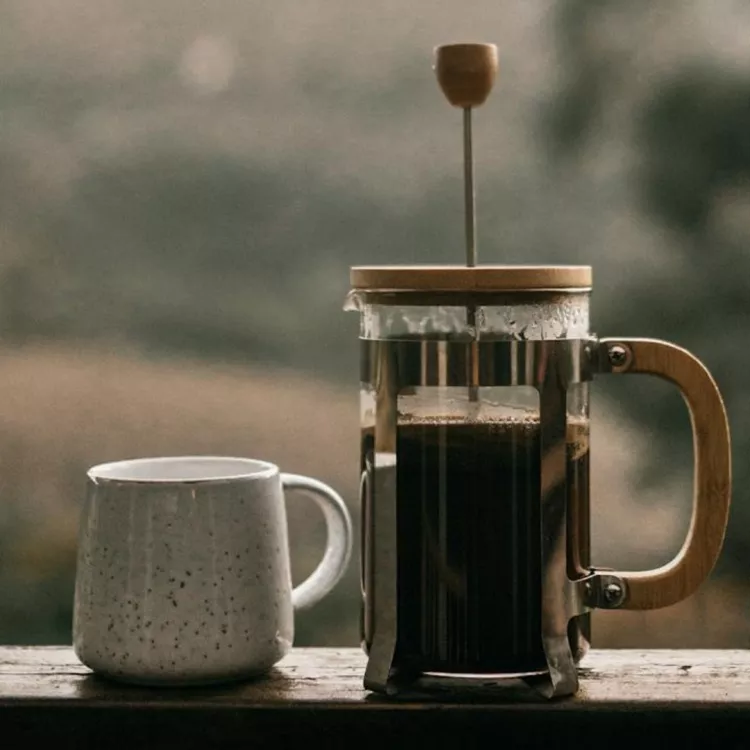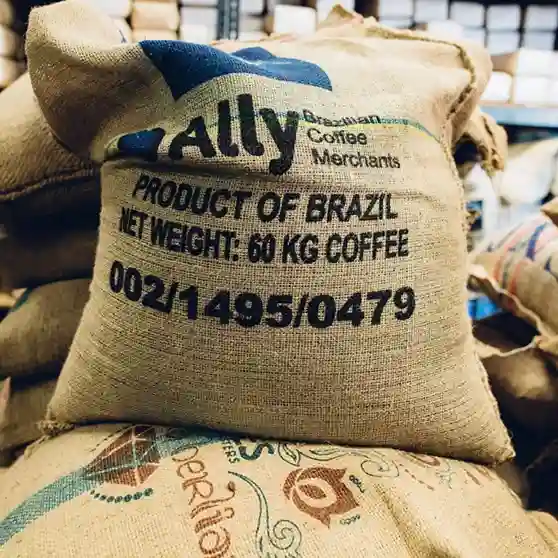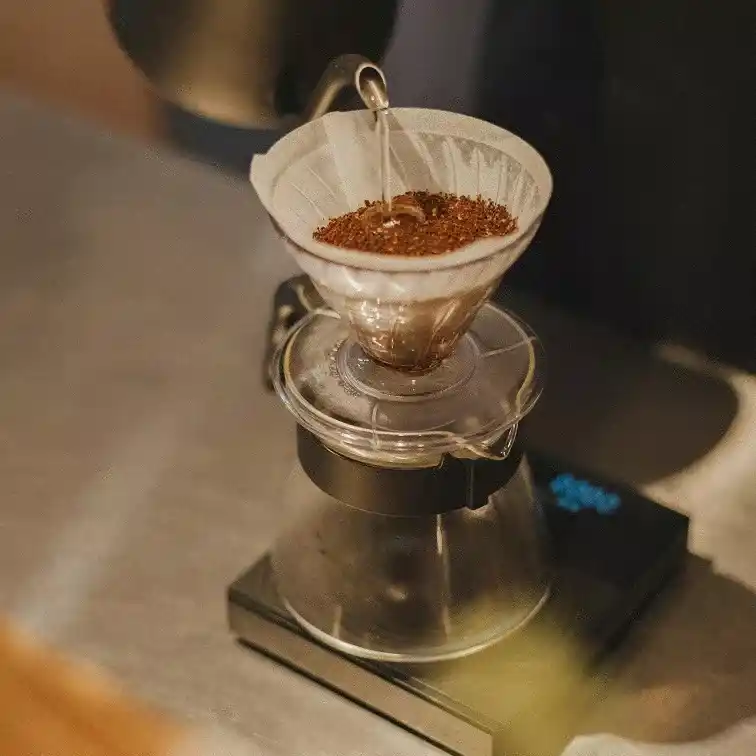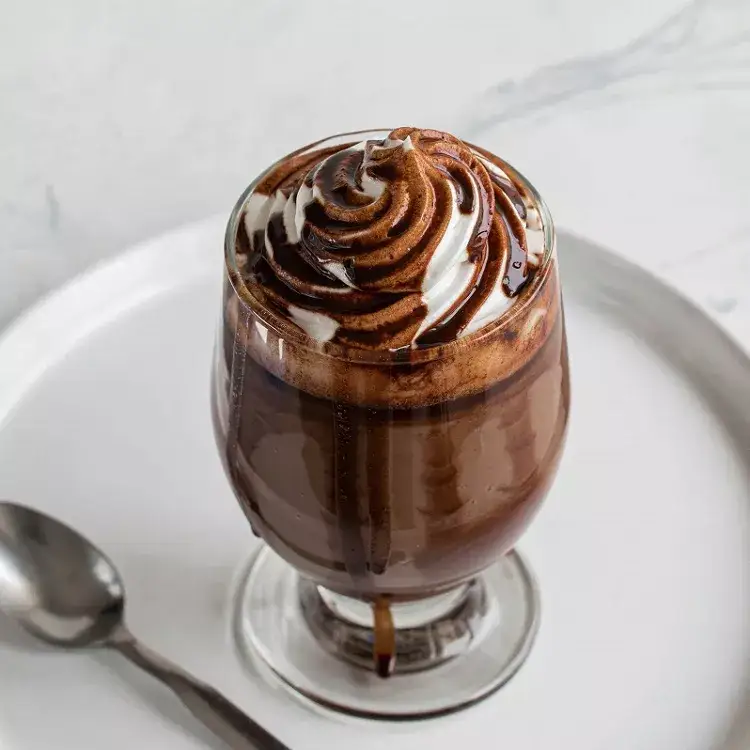Brewing coffee in a French press. Advantages of the device
French press is an exquisite way of making coffee that combines style, simplicity and depth of flavor. Coffee lovers choose it for its ability to fully reveal the aroma and flavor of the beans. The coarsely ground coffee is poured with hot water, infused for several minutes and filtered by hand without pressure, electricity or complex mechanisms.
Unlike a paper filter, the metal filter of the French press does not retain coffee oils, which ensures a rich, clean and natural taste. The drink is soft, voluminous, with a pleasant aftertaste. The device allows you to control every stage of the brewing process.
A versatile assistant for making coffee at home, on the go or in the office: it turns the process into a ritual with the natural taste of the beans and a calming atmosphere.
What grains to choose for a French press
When choosing coffee, choose 100% medium or light roasted Arabica, as these beans bring out the fruit, chocolate, or nutty notes of the drink to the best advantage. If you prefer milder and more delicate flavors, pay attention to Ethiopian or Colombian coffees. They have bright fruity and floral flavors. For those who prefer a deeper and richer flavor, Brazilian coffee with its nutty and chocolate notes will suit you.
It is important to choose freshly roasted beans of high quality from a trusted manufacturer. They guarantee a rich aroma and flavor in every cup.

Coffee grinding for French press
For this method of brewing coffee, a coarse grind of beans that resembles the size of sea salt crystals is ideal. It promotes even extraction, ensuring that the flavor is fully revealed without excessive bitterness. If the grind is too fine, the finished beverage will be cloudy and have an overly tart, even bitter flavor due to over-extraction. On the other hand, grinding too coarsely will result in a weak, watery flavor without bright notes. To achieve consistent and high-quality results, it is best to have a grinder at home that can adjust the grind level. This allows you not only to have the freshest coffee every time, but also to control the intensity of the flavor every time.
What kind of water to use
Water quality has a significant impact on the taste of the finished drink. Use filtered or bottled water with low mineralization (100-150 mg/l). Excessive hardness mutes the flavor, while too soft water makes the taste flat. The optimal water temperature is 92-96°C. Boiling water “burns” the coffee, while cold water does not allow the coffee to open up completely. Water is 98% of the drink, so its quality is as important as the beans.
The right ratio of coffee beans to water
The classic ratio is 1:15 (1 gram of grind per 15 ml of water). For a richer flavor, use 1:12, and for a lighter flavor, use 1:17. For example, take 20 grams of coffee per 300 ml of water and enjoy a balanced coffee. It is important to experiment and choose the proportion to your taste. Use a kitchen scale for accurate measurement – this is the key to a consistently delicious result.

How to brew coffee in a French press. Step by step instructions
- Weigh 18-20 g of coffee grinds
- Prepare 300 ml of water.
- Heat the water to a temperature of 92-96°C.
- Add the grind to the heated flask, pour in half the water, and stir.
- After 30 seconds, add the rest of the water.
- Cover without pressing, leave for 4 minutes.
- Slowly press down on the plunger.
Pour the finished drink into a cup immediately to avoid bitterness.
Uniform grinding and a stable temperature are the key to excellent results.
Recommendations and common mistakes during brewing
The most common mistakes when making coffee in a French press are using a fine grind, which makes the drink bitter and cloudy, using too hot water (over 96°C), which destroys the delicate aromatic notes inherent in coffee, or over-extracting the coffee after the plunger is pressed, which leads to a bitter taste. It is equally important to consider the freshness of the beans and proper storage. It is best to keep the beans in an airtight container protected from light and moisture.
To summarize: for a consistent quality result, weigh the grind and water, control the infusion time, and do not leave the drink in the French press after preparation, as the aroma and taste are quickly lost.
Caring for the device after use
Clean the French press thoroughly after each use. Disassemble the plunger, rinse the filter and flask with warm water and mild detergent. Pay special attention to the filter mesh, as coffee bean residue can affect the taste of the next brew. Once a week, a deep cleaning is recommended to remove accumulated oils. Regular care keeps the taste of your drink pure and extends the life of your appliance.

Additional tips and interesting nuances
A French press is the perfect base for experimentation. Add cardamom, cinnamon, orange peel or cocoa to the ground coffee to discover new flavors. Once brewed, you can combine it with milk, cream, or herbal alternatives to create a mild and velvety drink. Some baristas recommend adding a little salt to the coffee for a deeper flavor. It’s important not to be afraid to try new things. Choose your favorite cup, a quiet moment, and create your own ritual for daily enjoyment.
Conclusions.
A French press is an opportunity to make coffee in a simple, affordable, and elegant way. It doesn’t require any sophisticated equipment, allows you to control every stage of the process, and reveals the full flavor of the beans. Due to its versatility, the French press inspires experimentation with flavors, additives, aromas, and the process of creating drinks. It’s not just about coffee, it’s about enjoying the moment, and it’s easy to create it yourself.
A coffee press is the perfect option for those who value quality, freedom and comfort in every cup.






